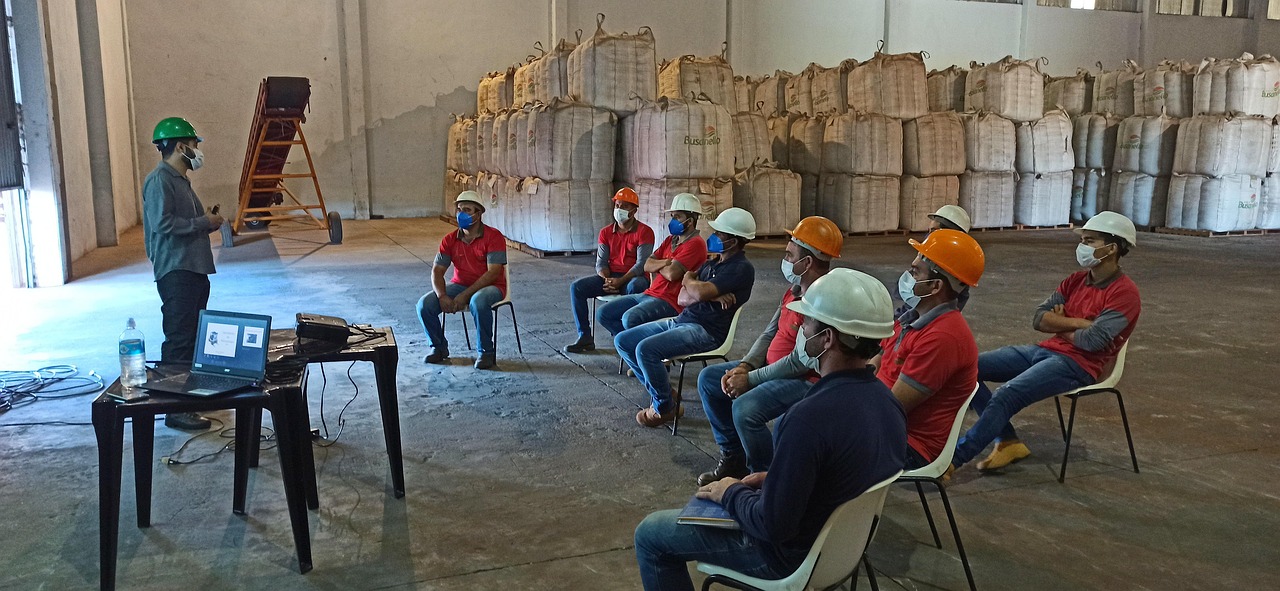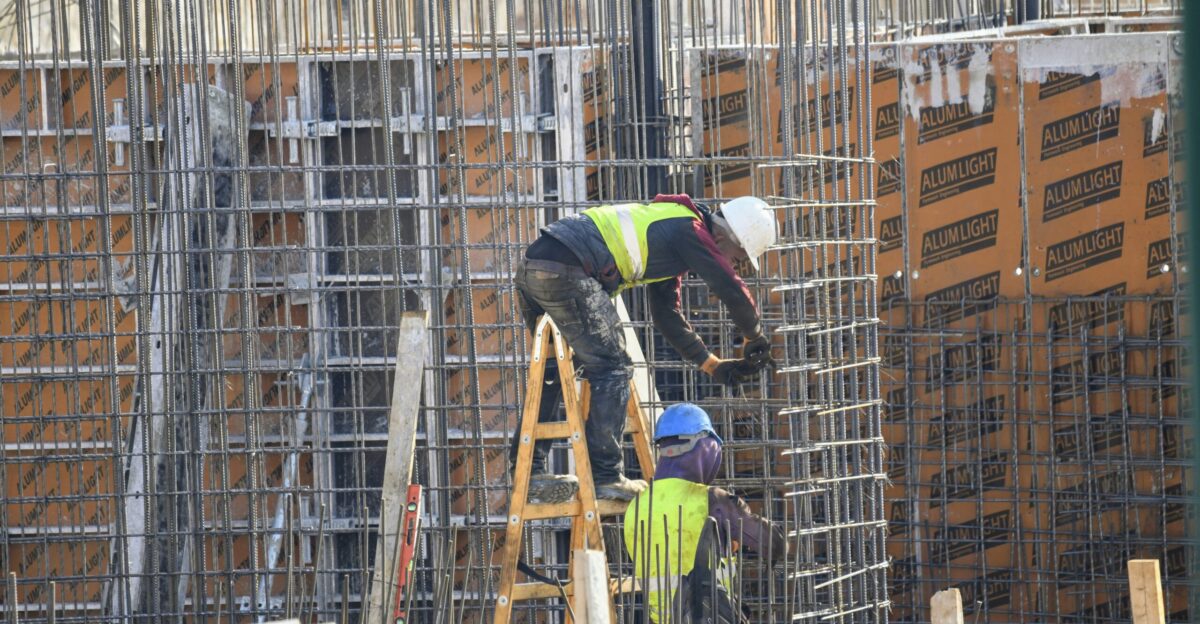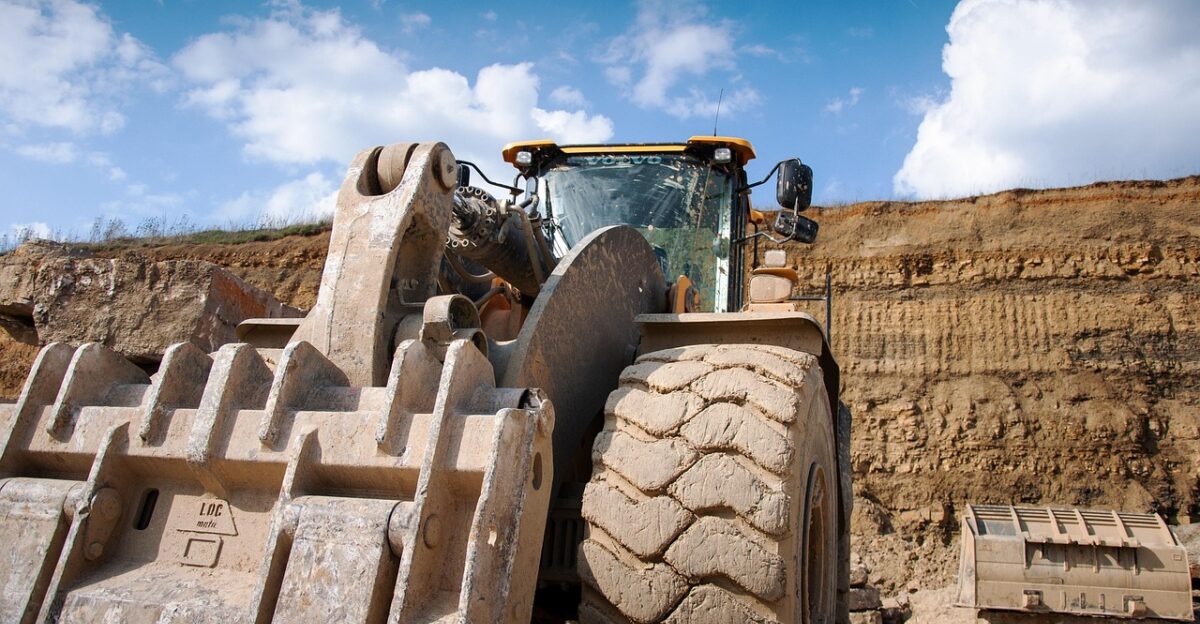
ICE raids at Alabama construction sites have led to the removal of about 48 workers from school projects, further straining the state’s construction labor market.
The actions, which occurred at Gulf Shores High School and Loxley Elementary, highlight the industry’s reliance on immigrant labor and raise concerns about potential project delays.
Why Did the Raids Happen?

Federal enforcement in Alabama has targeted undocumented workers at construction sites, with U.S. Immigration and Customs Enforcement detaining 37 workers at Gulf Shores High School in June and 11 at Loxley Elementary in July 2025.
Industry leaders claim this approach negatively impacts essential workers who have long contributed to the local economy.
Construction Industry’s Massive Economic Impact

Alabama’s construction industry significantly impacts the state’s economy, contributing $17.2 billion annually and supporting 200,000 full-time jobs, which accounts for 6.7% of the state’s GDP.
The commercial construction sector alone generated $9.4 billion in output in 2021, reflecting a 97% increase since 2015. Additionally, this industry paid over $600 million in state taxes in 2021, highlighting its vital role in Alabama’s economic landscape.
Russell Davis: Recognized Industry Leader

Russell Davis has been the Executive Vice President of the Home Builders Association of Alabama since 1984. In 2024, he received the National Association of Home Builders Career Achievement Award for his four decades of leadership in the construction industry.
He also oversees the Alabama Home Builders Self-Insurers Fund, providing workers’ compensation coverage to association members statewide.
Alabama’s Broader Labor Shortage Crisis

Alabama is facing significant workforce challenges, with a labor force participation rate of just 57.9% as of April 2025, one of the lowest nationally.
While the unemployment rate is low at 3.0% as of July 2025, indicating strong job demand, the construction sector alone added 4,000 jobs year-over-year. An analysis of the EB-3 visa program suggests that Alabama requires considerable foreign worker support to fill labor gaps across multiple industries.
Separate Georgia Incident Highlights National Pattern

In September 2025, an ICE operation in Georgia resulted in the detention of 475 workers at a Hyundai EV battery plant.
While unrelated to Alabama’s construction industry, this incident underscores the impact of immigration enforcement on sectors reliant on immigrant labor, raising concerns about operational stability for international companies.
OSHA Training Requirements Create Additional Challenges

In Alabama, construction workers are required to complete safety certifications, including OSHA’s 10-hour training for entry-level workers and 30-hour certification for supervisors.
The University of Alabama, as an OSHA Training Institute Education Center, offers courses in fall protection, excavation safety, and construction standards. The detention of experienced workers complicates labor shortages, as replacing them entails several months of training and certification.
Calls for Immigration Reform

Alabama state officials and construction industry leaders are calling for immigration policy changes to create legal pathways for skilled workers.
They propose targeted enforcement over broad raids and support employer-backed renewable visa programs, allowing experienced workers to maintain long-term legal employment and workforce stability.
Construction Worker Wages in Alabama

As of 2025, construction workers in Alabama earn varying salaries based on specialty and experience. The industry is facing competitive wage pressures due to a limited supply of skilled labor.
The Alabama Home Builders Self Insurers Fund provides workers’ compensation with maximum weekly benefits of $1,172 and minimums of $322, reflecting the state’s commitment to worker protection.
Baldwin County’s Major School Investment Program

Baldwin County is enhancing its educational infrastructure with the opening of the Baldwin Preparatory Academy in Fall 2024, marking Alabama’s first full-time career-technical high school.
This initiative is funded by the Special Purpose Local Option Sales Tax (SPLOST), which generates revenue from retail purchases without increasing property taxes. The academy represents a significant multimillion-dollar investment in specialized education.
Workforce Development Programs Under Pressure

Alabama’s construction industry is facing workforce development challenges, with many workers nearing retirement age. To address this, the Alabama Construction Recruitment Institute was established in 2009 under Alabama Code Section 41-10-641, launching the Go Build Alabama campaign to attract new talent.
However, current training programs are insufficient to quickly replace experienced workers lost due to enforcement actions.
Housing Market Faces Supply Constraints

Alabama’s housing market is under strain from rising construction delays and supply constraints.
The Bureau of Labor Statistics reports that over 100,000 workers are employed in the state’s construction sector, but labor shortages are extending project timelines. Nevertheless, recent reports indicate sustained demand for construction despite these challenges.
Investment Climate Faces Uncertainty

In 2024, Alabama secured billions in new capital investment, resulting in thousands of job commitments across various industries. However, uncertainty surrounding immigration enforcement is raising concerns among investors about project reliability and costs.
Additionally, a construction labor shortage could threaten Alabama’s reputation as a business-friendly state, which may impact future economic development efforts.
Baldwin County Infrastructure Beyond Schools

Baldwin County is investing heavily in infrastructure improvements, including water system upgrades and stormwater management, funded by the American Rescue Plan.
Their development strategy allocates funds for justice system expansion and infrastructure rehabilitation. However, labor shortages threaten these essential public works projects, which are crucial for the county’s population and economic growth.
Skills Certification and Future Labor Demand

The Home Builders Association of Alabama offers a Residential Construction Skills Certification to validate workers’ knowledge and skills. However, replacing certified workers requires significant training time.
The Bureau of Labor Statistics projects that construction employment will grow due to rising infrastructure investment. While certification ensures quality, it can hinder rapid workforce replacement.
Regional Economic Development Connections

Baldwin County’s economy relies heavily on its construction capacity to support industrial development projects. Its strategic location and infrastructure investments have attracted significant manufacturing commitments, emphasizing the link between a skilled construction workforce and economic success.
Labor disruptions in construction can adversely affect the county’s ability to attract new investments and manage population growth.
Industry Seeks Sustainable Solutions

The Associated Builders and Contractors of Alabama, representing significant portions of the commercial construction sector’s economic impact, is working with lawmakers to develop sustainable workforce solutions.
The organization’s 2024 economic impact study, highlighting the $17.2 billion industry contribution, supports calls for guest worker programs, skills-based visa categories, and pathways for experienced workers to obtain legal status while continuing to contribute to Alabama’s construction sector.
Training Infrastructure Responds to Crisis

Alabama’s community colleges and training centers are expanding construction programs to address workforce needs. Jefferson State Community College offers comprehensive OSHA certification programs, while the University of Alabama’s OSHA Training Institute Education Center provides advanced safety training.
However, comprehensive construction skills training typically requires 6-24 months for proficiency, making immediate workforce replacement challenging following enforcement actions.
Economic Forecasts Signal Continued Growth

Despite current labor challenges, economist Dr. Kevian Deravi projects Alabama’s construction industry economic impact will exceed $20 billion by 2025, building on the documented $17.2 billion impact in recent studies.
Global construction market forecasts suggest continued growth opportunities, with Alabama positioned to capture market share if workforce challenges can be resolved. The state’s 3.0% unemployment rate as of July 2025 indicates strong underlying economic fundamentals.
Balancing Enforcement and Economic Reality

Alabama’s construction industry stands at a critical juncture where immigration enforcement meets economic necessity. With the industry contributing $17.2 billion annually and supporting 200,000 jobs according to verified economic impact studies, the recent ICE raids on school construction sites have highlighted the urgent need for comprehensive immigration reform.
The coming months will determine whether Alabama can maintain its construction capacity while navigating federal immigration policy challenges.